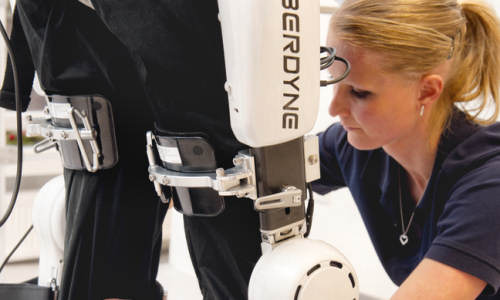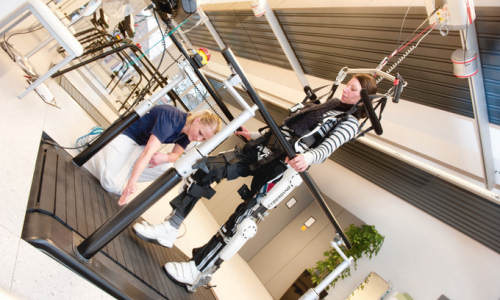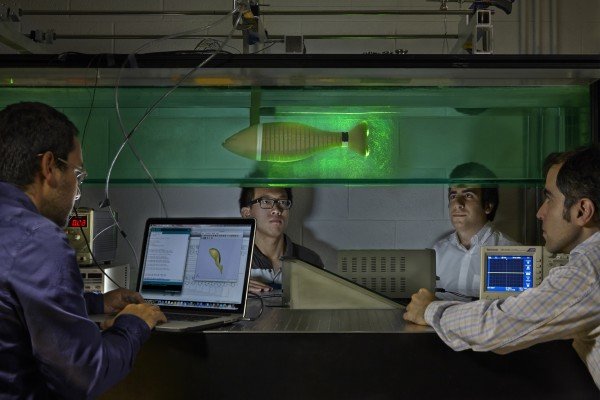For most paraplegic patients, being able to walk again remains a dream. The HAL robot suit can help them regain a certain degree of mobility and activity. An expert team at the Centre for Neurorobotic Movement Training (ZNB) in Bochum has been testing the exoskeleton that was originally developed in Japan since 2011. With excellent results.
© RUBIN, photo: Nelle
Weakened signals
Paraplegia is essentially the result of damaged nerve structures in the spine. In order to perform a movement, the brain sends out a signal via the spinal cord and its surrounding nerves to a muscle – e.g.one in the arm or in the leg. Due to his injury, a paraplegic patient’s muscles operate with weakened signals. As a result, the signal does not arrive in the leg or in the arm.
Activating residual functions of muscles
This is where the HAL robot suit comes into play: it picks up the weakened signals through sensors that are attached to the patient’s skin and sets the motors in the pelvic and knee-joint regions in motion. Thus, HAL takes over locomotion on the patient’s behalf by connecting directly to the patient’s nervous system. “This is how we wish to activate and foster the residual function of the muscles and, ultimately, to help the patients attain better activity levels,” explains Professor Schildhauer, Medical Director at the university hospital Berufsgenossenschaftliches Universitätsklinikum Bergmannsheil.
Better performance in everyday life
The expert team uses the clinical trials at the ZNB to determine, among other things, how much training is required in the best possible scenario and how long the training effects will or will not last. They have implemented a three-month training cycle, with five sessions per week. With excellent results: “Our patients attain activity levels which improve their ability to navigate around their everyday life and their surroundings. Thus, they continue to train their movement routine every day,” explains Professor Schildhauer. A patient who had been permanently confined to a wheelchair, for example, will be able to walk short distances with the aid of a walking frame after a three-month training period.
Unique in Germany
In Germany, Bergmannsheil is the only hospital where the robot suit is being tested. In Japan, similar suits are being utilised in some 200 geriatric rehab centres. The long-term objective is to launch HAL in the German market so that it can be used as a therapy instrument to help as many people as possible. However, insurance companies will not incorporate the therapy into their clearing system until well-founded data are available, which will only be the case once further trials have been conducted.
Story Source:
The above story is based on materials provided by Ruhr-Universitaet-Bochum.






